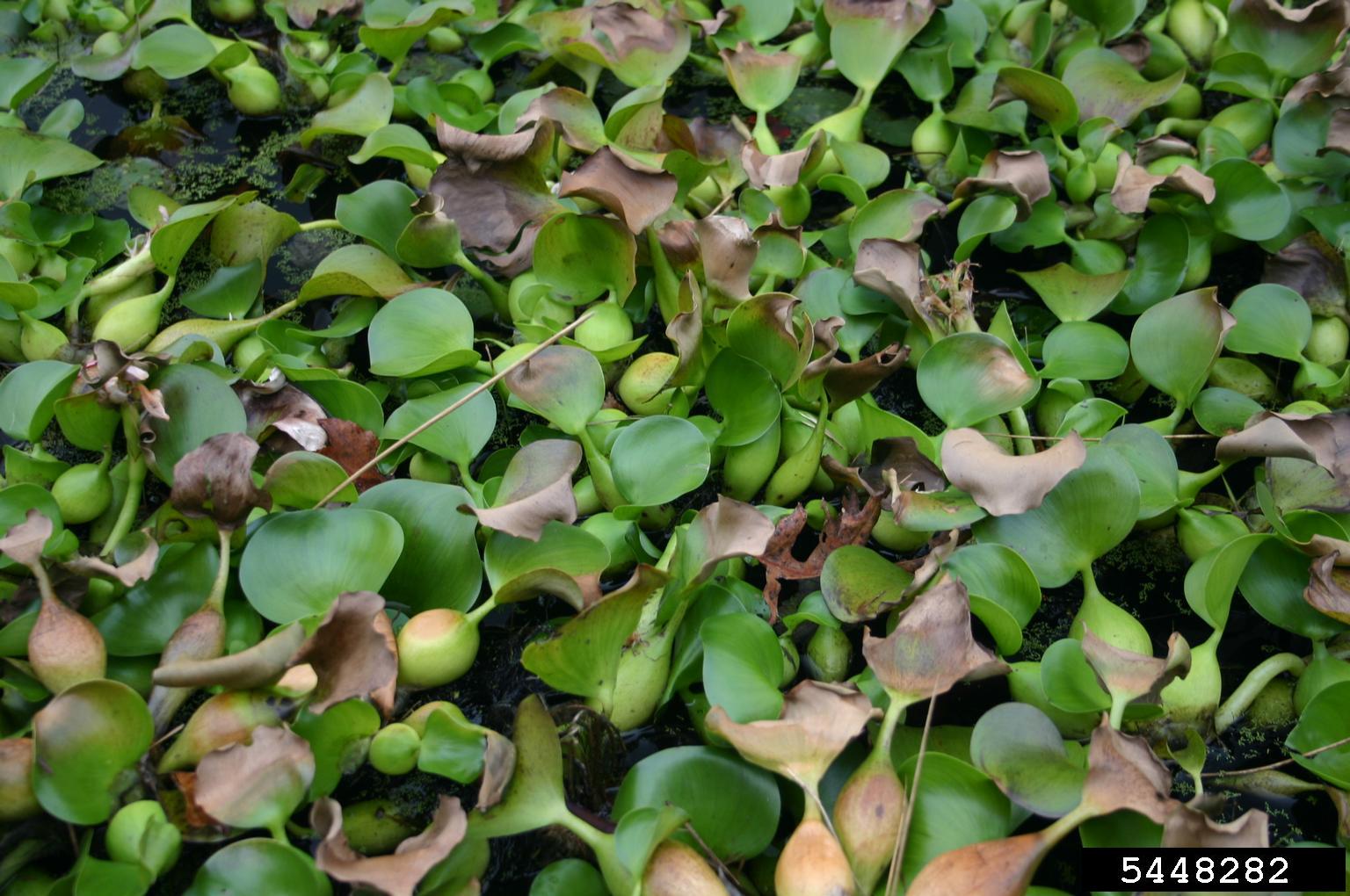
Early Detection Species in Virginia
Water Hyacinth (Eichhornia crassipes)
What's the harm?
Water hyacinth can rapidly form dense monotypic mats on the surface of ponds and thus block sunlight, impede water flow and boat traffic, obstruct hydroelectric power generation, and outcompete native plant species. Dense stands also provide a habitable breeding zone for mosquitoes.

What is it?
Water hyacinth is a flowering, free-floating aquatic plant.
.jpg)
How did it get here?
In 1884, it was introduced to the United States from South America as an ornamental plant in water gardens.
Where is it now?
Water hyacinth is an aquatic species found in temperate climates worldwide, in a variety of freshwater habitats including lakes, rivers, canals, ponds, ditches, etc. Originally from Brazil, water hyacinth is now naturalized in areas around the world, including parts of Africa, Australia, India and North America. Within the United States, it is present perennially in the southeastern states and as a summer escapee from cultivation in the northeast, as it is not able to survive harsh winters.
How can it be controlled?
Water hyacinth has been controlled using mechanical, biological and chemical methods. Mechanical methods, such as harvesting and raking, can be used to reduce the biomass in a colony, but are labor intensive and typically do not keep up with the rate of growth. Several weevil species have been introduced and have successfully controlled populations of water hyacinth in some places. Herbicides have also shown some success; however, the application of herbicides requires permitting and may potentially affect unintended native targets.
What can I do?
Don't use water hyacinth in your pond or water garden.
Gorgeous native species for ponds or wetlands include: arrow arum (Peltandra virginica), pickerel weed (Pontedaria cordata), and broadleaf arrowhead (Sagittaria latifolia). For more native plant suggestions, see the DCR Native Plant Finder >>
How do I report an invasive species?
If you find this or other early detection species, go to
our reporting page here >>
or call 804.786.9112 to report your discovery.
How can I learn more?
Read more about water hyacinth here >>
Image/Illustration Credits
University of Georgia, Bugwood.org
 Virginia Invasive Species
Virginia Invasive Species